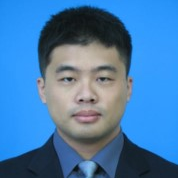Frontiers of Semiconductor Lasers
A special issue of Crystals (ISSN 2073-4352). This special issue belongs to the section "Inorganic Crystalline Materials".
Deadline for manuscript submissions: closed (31 October 2022) | Viewed by 33607
Special Issue Editors
Interests: tunable laser; DFB laser; grating coupled laser
Special Issues, Collections and Topics in MDPI journals
Special Issue Information
Dear Colleagues,
Semiconductor lasers are an essential light source for applications. Although they have been utilized in optical communication, sensing, and industry for a long time, various problems remain associated with their use. Solving the problems of high power, high speed, single longitudinal mode, narrow linewidth, and so on will lead to the development of new equipment and new services. When it comes to high-power applications, semiconductor lasers are of interest due to their broad stripe and high power with high efficiency, as well as high COMD facets. In terms of information use, on the other hand, semiconductor lasers are of interest due to their high gain, high modulation speed, shorter cavities, etc. Additionally, numerous new technologies such as plasmonics, topological photonic crystals, quantum dots, and organic semiconductor lasers are flourishing every day.
These semiconductor laser technologies will be applied in the near future to a wide variety of applications, from terminals to home appliances, industrial equipment, hospitals, and in various environments where conventional methods are difficult to apply. Nevertheless, and although the basic technical functions of these semiconductor laser technologies already exist, practical and commercial systems are still very limited, and thus, the activation of related research is urgently needed for the development for many applications. Clarifying the superiority of this type of semiconductor laser and the problems that still need to be solved and determining the state of the art of this field, such as materials, devices, subsystems, systems, applications, as well as safety and standardization will be of significant value to a better future society.
For this reason, we have decided to publish a Special Issue that contains the latest results. Although this field is related to frontiers in semiconductor lasers, it is configured by a wide range of technologies, such as materials, devices, systems, and applications as described above. However, this Special Issue mainly invites papers that are related to functional devices in lasers with semiconductor crystals, quantum dots, organic semiconductors, and applications of semiconductor lasers. Another Special Issue shall be prepared for important papers that are slightly outside the scope of this Special Issue, such as individual devices (power transmission and light-receiving devices), etc. Please submit your paper to the Special Issue that more closely matches its content.
Dr. Yongyi Chen
Dr. Li Qin
Guest Editors
Manuscript Submission Information
Manuscripts should be submitted online at www.mdpi.com by registering and logging in to this website. Once you are registered, click here to go to the submission form. Manuscripts can be submitted until the deadline. All submissions that pass pre-check are peer-reviewed. Accepted papers will be published continuously in the journal (as soon as accepted) and will be listed together on the special issue website. Research articles, review articles as well as short communications are invited. For planned papers, a title and short abstract (about 100 words) can be sent to the Editorial Office for announcement on this website.
Submitted manuscripts should not have been published previously, nor be under consideration for publication elsewhere (except conference proceedings papers). All manuscripts are thoroughly refereed through a single-blind peer-review process. A guide for authors and other relevant information for submission of manuscripts is available on the Instructions for Authors page. Crystals is an international peer-reviewed open access monthly journal published by MDPI.
Please visit the Instructions for Authors page before submitting a manuscript. The Article Processing Charge (APC) for publication in this open access journal is 2600 CHF (Swiss Francs). Submitted papers should be well formatted and use good English. Authors may use MDPI's English editing service prior to publication or during author revisions.
Keywords
- semiconductor laser
- laser in industry
- laser in optical communications
- laser sensing
- quantum dot
- organic semiconductor laser
- perovskite laser
- 2D material laser
- photonic crystal laser
- topological laser






